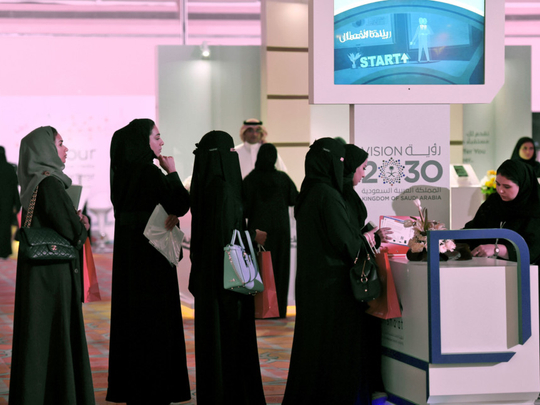
Dubai: Saudi Arabia’s bold reforms programme under Vision 2030 is moving in the right direction and is supported by a strong governance and monitoring system, according to a staff discussion paper from the International Monetary Fund (IMF).
“The reform plans aim to transform the Saudi economy by diversifying it away from oil, giving a larger role to the private sector, increasing private sector jobs for Saudis, adjusting fiscal policy to the realities of lower oil prices, and increasing the effectiveness and accountability of government,” Timothy Callen, Mission Chief for Saudi Arabia, IMF, said in an online press briefing.
Following Vision 2030, more specific policy goals and reform details have been provided in subsequent “vision realisation” programmes. These include the National Transformation Programme 2020 (NTP), launched in June 2016, and the Fiscal Balance Programme 2020 (FBP) launched in December 2016. Recently, 10 additional programmes have been outlined which will be further detailed in the coming months.
According to the IMF Staff assessment, fiscal policy has continued to adjust to lower oil prices. The non-oil primary deficit declined to 44.7 per cent of non-oil GDP (gross domestic product) in 2016 from 49.8 per cent in 2015. A contraction in spending of 6.4 per cent was led by a sharp fall in capital expenditures which helped offset a higher wage.
Gradual consolidation
Saudi Arabia has some fiscal space that should be used to undertake a more gradual fiscal consolidation that balances the budget by 2022 rather than in 2019 as originally set out in the FBP.
“The fiscal measures that have so far been announced, if fully implemented, appear sufficient to move the budget close to balance in 2022. The focus should now be on successfully implementing these measures, smoothing the planned adjustment, improving the composition of the expenditure adjustment to provide more room for social safety net or other spending to support structural reforms, and identifying some additional fiscal measures to achieve budget balance in 2022,” Callen said.
Real GDP growth slowed to 1.7 per cent last year from over 4 per cent in 2015, with non-oil growth near-zero compared to 3.2 per cent in 2015. Non-oil growth is projected to pick up to 1.7 per cent in 2017, but overall real GDP growth is expected to be close to zero as oil GDP declines in line with Saudi Arabia’s commitments under the Opec+ agreement.
Growth is expected to strengthen over the medium-term as structural reforms are implemented. Risks mainly come from uncertainties about future oil prices, as well as questions about how the ongoing reforms will affect the economy. Employment growth has weakened, and the unemployment rate among Saudi nationals has increased to 12.3 per cent.
After increasing in early 2016 due to higher energy and water prices, CPI (consumer price index) inflation has turned negative in recent months. It is, however, expected to increase over the next year due to the recently introduced excises taxes, further energy price reforms, and the introduction of the VAT (value added tax) at the beginning of 2018.
Narrowing deficits
The fiscal deficit is projected to narrow substantially in the coming years. It is expected to decline from 17.2 per cent of GDP in 2016 to 9.3 per cent of GDP in 2017, and to just under 1 per cent of GDP by 2022. This assumes that the major non-oil revenue reforms and energy price increases outlined in the Fiscal Balance Programme are introduced on schedule and that operational and expenditure savings identified so far by the Bureau of Spending Rationalisations are realised. The deficit is expected to continue to be financed by a combination of asset drawdowns and domestic and international borrowing.
The current account balance is expected to move into a small surplus in 2017 as oil export revenues increase and import growth and remittance outflows remain relatively subdued. Net financial outflows are expected to continue, and SAMA’s [Saudi Arabian Monetary Agency] net foreign assets are projected to continue to decline, although it will remain at a comfortable level.
Credit and deposit growth are weak and are only expected to recover gradually. Interbank interest rates, which spiked higher during 2016, have fallen, and liquidity in the banking system is at adequate levels. Non-performing loans (NPLs) increased slightly to 1.4 per cent, but remain low.












